Describe location, shape, dimensions and extent of pancreas.
Pancreas is a soft lobulated composite gland which consists of both exocrine and endocrine parts.
- Location: It lies almost horizontally across the posterior abdominal wall and occupies posterior part of epigastrium, umbilical and left hypochondriac regions (at the level of L1and L2). It is retroperitoneal.
- Shape: It is roughly retort shaped.
- Dimensions:
- Length;12-15cm
- Breadth: 3-4cm
- Thickness: 1.5-2cm
- Weight: 80-90gms.
- Extent: It extends from concavity of duodenum to the hilum of spleen.
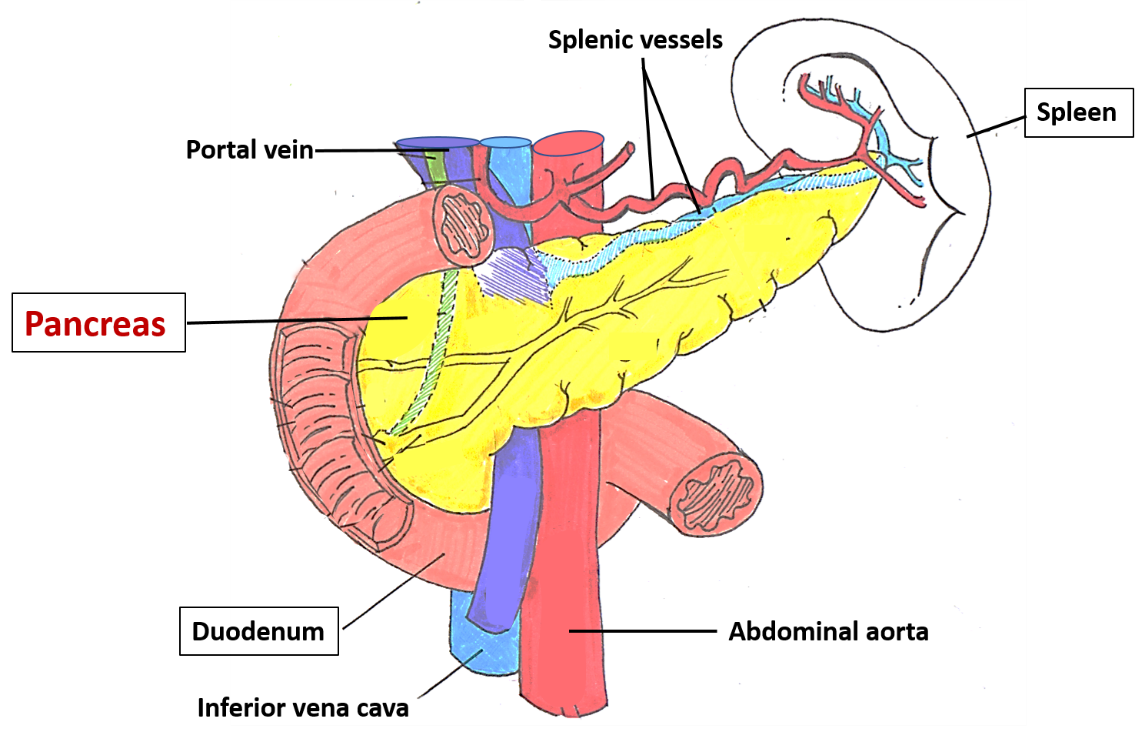
What are the parts of pancreas?
Pancreas has following parts:
- Head
- Neck
- Body
- Tail
- Uncinate process
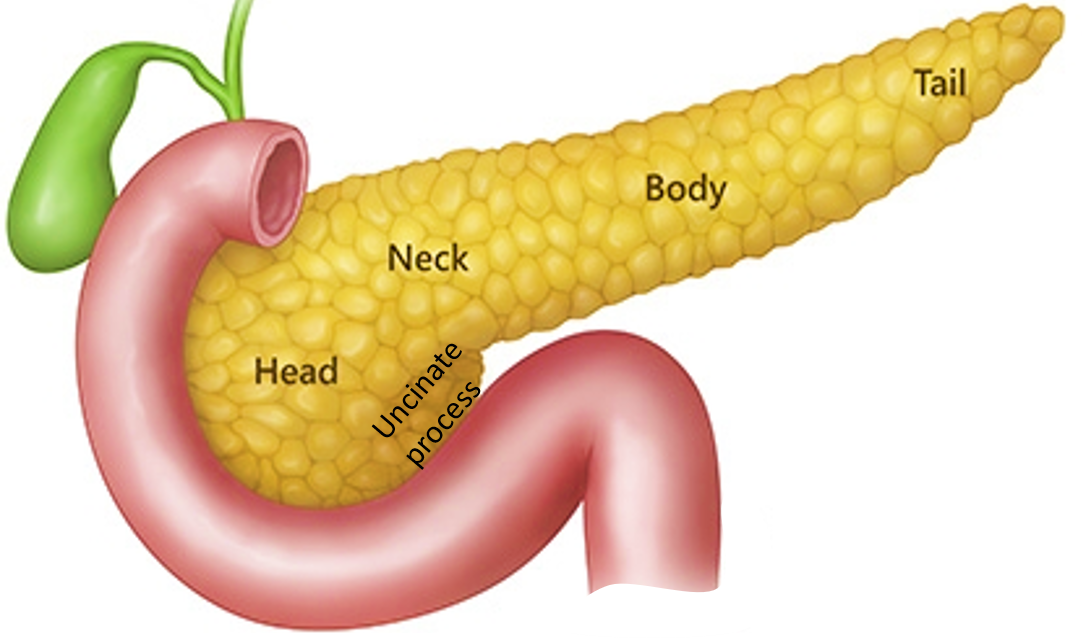
Head: It is the right enlarged part of the pancreas lodged in the duodenal curvature (formed by 1st, 2nd and 3rd parts of duodenum). From its lower portion a hook like process called uncinate process projects which is directed towards left.
Neck: It is the constricted part at the junction of head and body of pancreas.
Body: Is the elongated tapering portion lies obliquely across the posterior abdominal wall. It is triangular in section and has:
- 3 borders: superior, anterior and inferior. Anterior border provides attachment to transverse mesocolon.
- 3 surfaces: anterior, posterior and inferior.
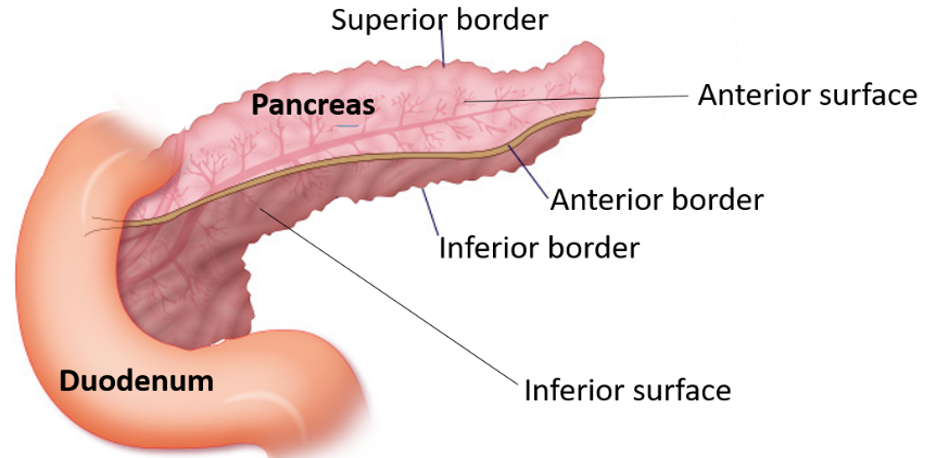
Tail: Narrow end that lies between the two layers of lieno-renal ligament along with splenic vessels).
Describe the relations of pancreas?
Following are the relations of Pancreas:
Part of Ppancreas Anterior Relations Posterior Relations Head Gall bladder Bile duct Firstt part of duodenum Inferior vena cava Transverse colon Right renal vessels Coils of jejunum Right gonadal vesels Neck Pylorus Formation of portal vein Leeser sac Gastroduodenal artery Body Stomach separated by lesser sac Aorta and origin of superior mesenteric artery Splenic and inferior mesenteric vein Left renal vessels left crus of diaphragm Left kidney and suprarenal gland

Describe the ducts of pancreas.
Pancreatic ducts: Exocrine part of the pancreas pours its secretions through two ducts, the main pancreatic duct and accessory pancreatic duct.
Main pancreatic duct (Wirsung’s duct)
- Commences from the tail of the pancreas.
- It then passes through the body of the pancreas.
- Following this it passes through the lower part of head.
- Pierces posteromedial wall of 2nd part of duodenum.
- Then joins bile duct and forms Ampulla of Vater.
- Opens on the summit of major duodenal papilla ( 8-10cm. from the pylorus)
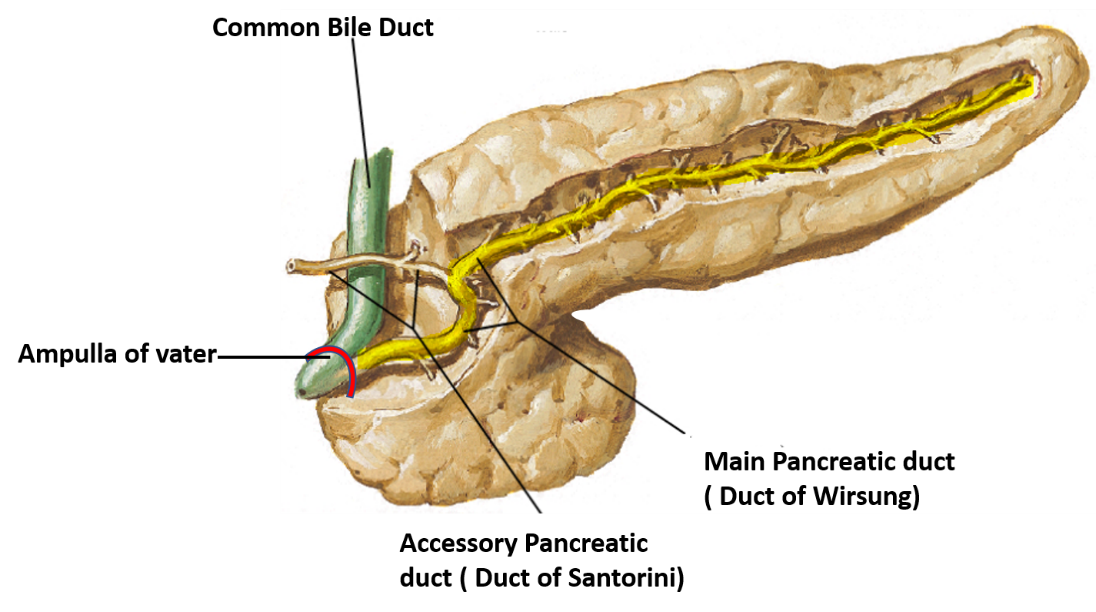
Accessory pancreatic duct (Duct of Santorini)
- Commences from uncinate process.
- Passes upwards and towards right.
- Crosses the main pancreatic duct.
- Opens in 2nd part of duodenum on minor duodenal papilla (2cm. above the major duodenal papilla).
Describe the arterial supply of pancreas.
Head is supplied by superior and inferior pancreatico-duodenal arteries.
Neck body and tail are supplied by pancreatic branches of splenic artery.
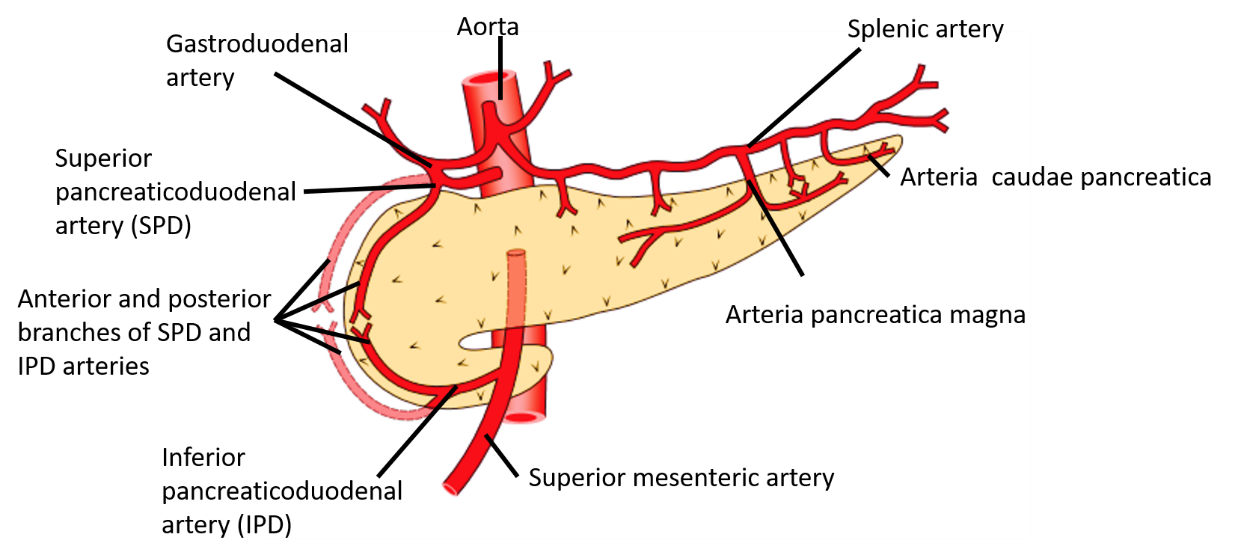
Applied Aspect
Tail of pancreas contains maximum number of islets of Langerhans.
Therefore, while performing splenectomy care has to be taken to preserve the tail while ligating splenic vessels.
Annular pancreas
It is a congenital defect, in which the second part of duodenum is surrounded by pancreas. It causes narrowing and obstruction of the lumen of duodenum. It occurs due to abnormal embryological development. It can result from growth of a bifid ventral pancreatic bud around the duodenum. Instead of going dorsal to the duodenum to fuse with the dorsal bud, the two parts of the bifid ventral bud surround the duodenum, forming a pancreatic ring.
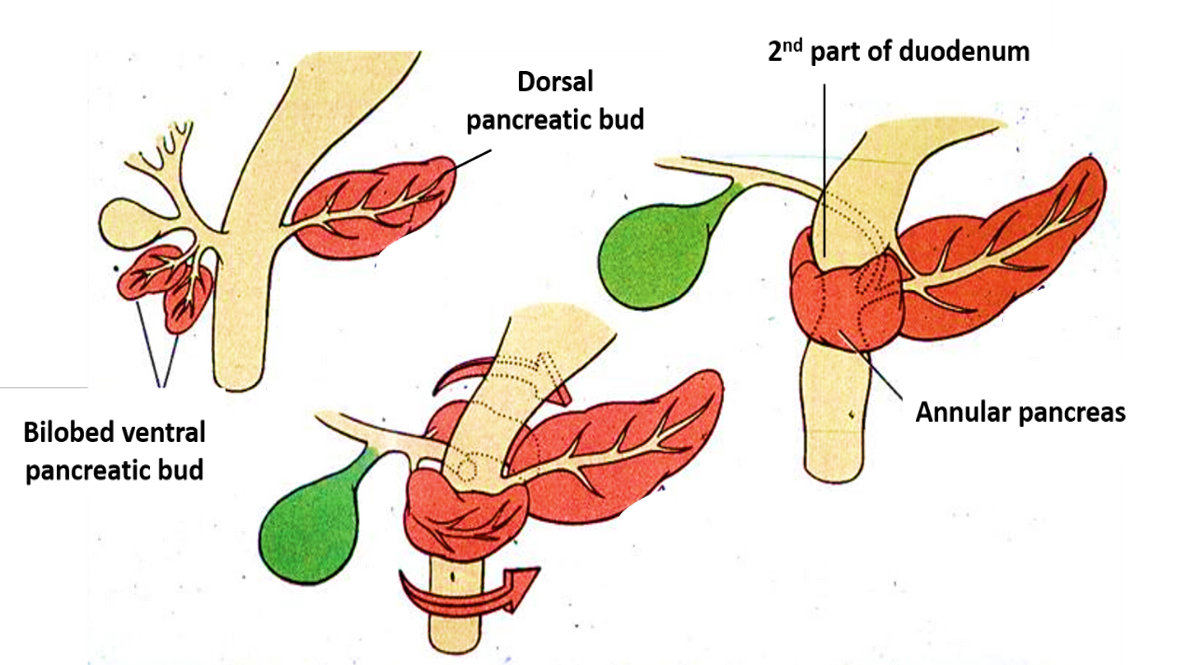
Cancer of head of pancreas
It may cause jaundice due to pressure upon bile duct which passes behind the head of pancreas. It may also cause portal hypertension due to pressure on portal vein.
Pancreatitis
Inflammation of pancreas is called pancreatitis. It is s often associated with collection of fluid in the lesser sac.

Mam please can you upload easy and line diagrams so that we can draw in exams and clinical based questions as per new mci question paper.
Ok. Iwill try to do that.
Excellent question
Concise answers
I HAVE RECOMMENDED THIS SITE MY STUDENTS